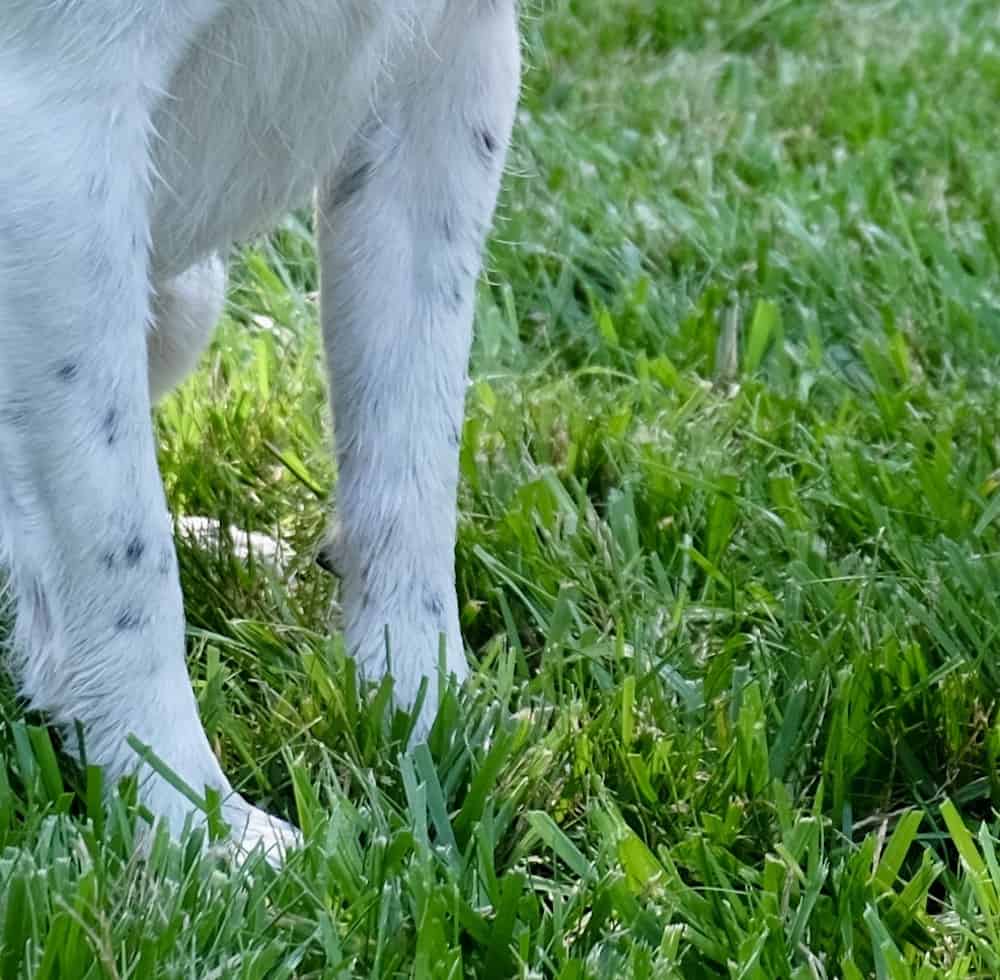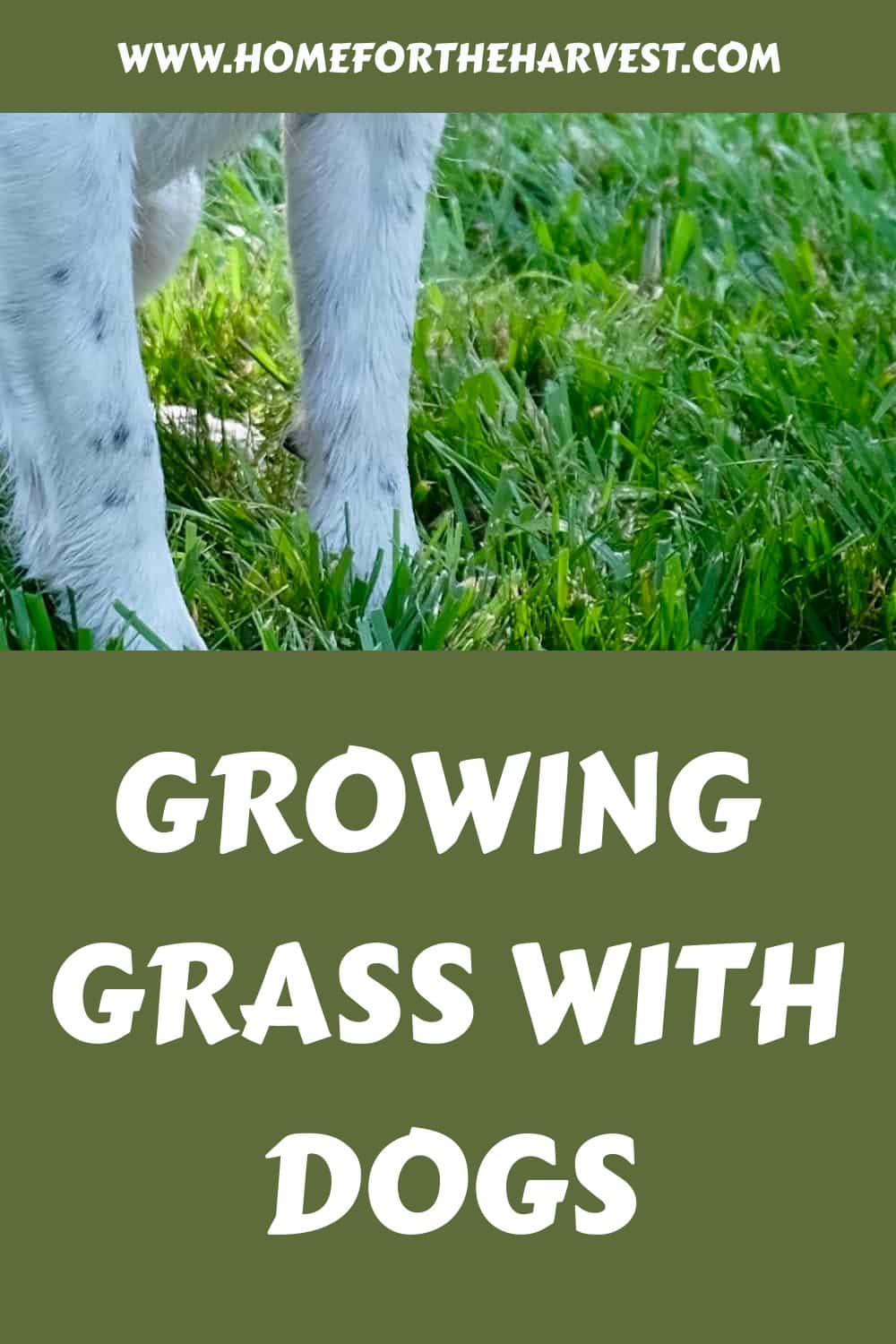Everyone knows grass looks greener on the other side… especially if you have dogs! But you can still have a lovely lawn if you’ve got a four-legged best friend around. While there are quite a few factors in effective lawn care, there are two key aspects for dog lovers:
- Plant tough varieties, like mixes of tall fescue, perennial ryegrass, and Kentucky bluegrass in cooler climates and zoysia grass, Bermuda grass, and Bahia grass in warmer zones.
- Do one area at a time, or consider providing a patio patch of potty grass while the outdoor grass gets established.
- Use a pet-safe lawn fertilizer rather than a concentrated conventional lawn grass fertilizer.
- Use a pet patch lawn treatment for spots to dilute urine and minimize burning.
Read on to learn more about creating and caring for a healthy lawn for you and your dogs.
The basics for growing a successful lawn with dogs
Here are the basic factors for growing grass successfully with your dogs around:
- Start small. Plant only as much lawn as you can maintain. The local dog park is still an option to switch things up now and then (and meet up with their four-legged friends!).
- Plant tough varieties. Don’t cheap out on generic grass seed mixes, plugs, or sod. Invest in high-quality, tough grass seeds that will produce strong, resistant turf grass plants. In temperate-climate states, options like tall fescue, perennial ryegrass, and Kentucky bluegrass (or a mix of these varieties) are good choices. For Southern lawns, zoysia grass, Bermuda grass, and Bahia grass are top picks for the best types of turf for dogs.
- Find the sunny side. Plant grass where the lawn will get lots of sunlight. It is much harder to grow a shaded grass lawn with dogs than a sunny grass lawn with dogs around.
- Choose a sandy site. Try to choose a location with naturally sandy soil. If you’re stuck with clay soil, purchase and place at least a few inches of sandy loam or high-quality topsoil on top of the clay before seeding. Dogs can make a giant mess of a clay lawn, and the clay-soil lawn can make a mess of them. And, the grass will grow better in the sandy loam anyway.
- Avoid slopes. Lawns that are relatively flat are much easier to maintain than lawns with steep slopes (particularly with paw traffic around).
- Grow long blades and deep roots. The healthiest grass plants have long blades and deep roots. These grass plants are the most dog-friendly. Mow grass at a length of 3″ high, and never remove more than 1/3 of the blade at one time. Water the grass infrequently but deeply to encourage root development.
- Keep grass growing quickly. Ensure the lawn has enough water and nitrogen to keep up a healthy pace of growth. Use a pet-safe lawn fertilizer like Scott’s Natural Lawn Food or Kellogg’s Organic Lawn Food on your turf grass. Overfeeding and overwatering can be harmful, however, so keep a close eye on the health of your lawn.
Getting the basics right in the beginning will make your lawn much healthier, whether or not you’ve got dogs around. But with the added load of dogs, it’s best to give lawn grass the best chance possible by setting it up for success in the first place.
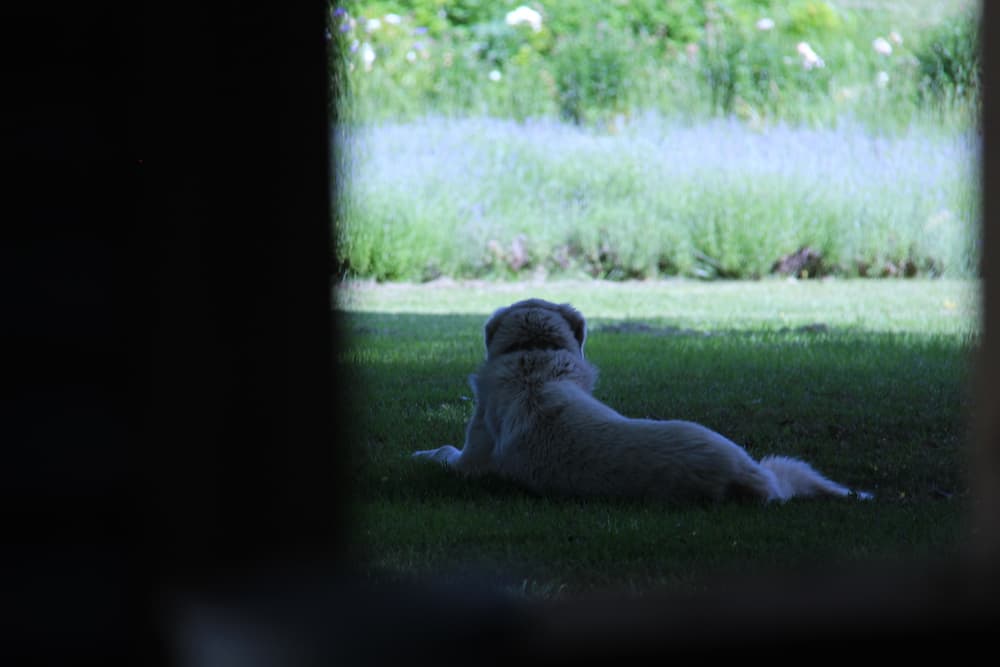
The challenges of growing grass with dogs around
Dogs are hard on turf grass. They run back and forth, wearing down the grass plants in the lawn until they create paths of bare dirt. They can also leave spots of burnt yellow grass after they urinate and have also been known to dig the odd hole in the lawn. And all this is only possible after the lawn’s grass seed has been established in the first place!
It’s not that grass and dogs are poor companions – it’s that dogs love grass way too much! They love everything about it: how it smells, how it feels, how it looks – and you probably do too! The problem is, grass cannot take all that love for long. And before you know it, brown spots of grass and bare earth can start to appear.
While growing grass with dogs around can be a challenge, it is well worth the investment. Dogs prefer natural living grass lawns to artificial turf. Just as we 2-legged creatures prefer playing soccer on real grass, our dogs love a lush green surface to play on. The lawn acts as a lovely sports field for their everyday antics!
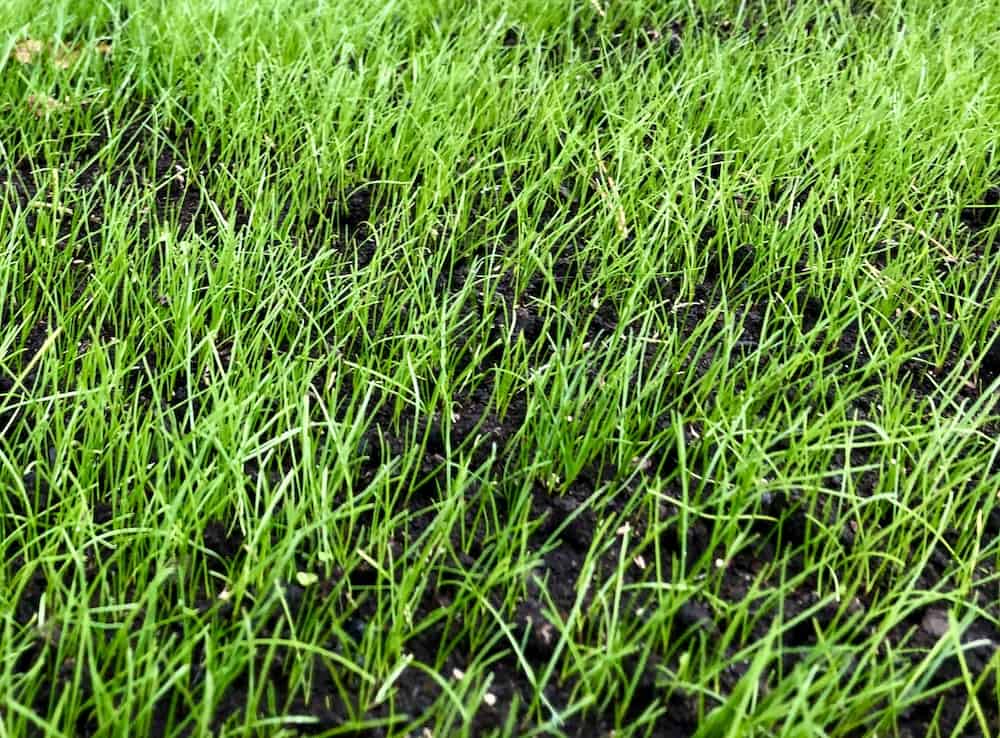
Establishing a new lawn with dogs in the household
There are times when dog owners need to establish a brand-new lawn from scratch. This is common on new building lots, after home improvement work, or after heavy landscaping and hardscaping. A new lawn may also be established on the site of an old lawn if the old lawn was beyond light rehabilitation.
The basics for a dog-hardy lawn are the same as the basics for a sports field or well-traveled golf course. We’re looking for rich, sandy loam soil that drains well. The lawn needs to get quite a bit of sun to truly thrive. Follow the basics of responsible lawn care and your lawn will be off to a dog-friendly start. You may also want to consider giving the grass a bit of a boost with an OMRI-listed turf starter fertilizer.
Planting grass seed with dogs in the household does require special attention, as your pooch is unlikely to read your well-meaning “Keep Off Grass” signs. Keep the dog off of the lawn completely for at least six weeks after the date of initial seed germination. Provide an alternate patch of potty grass while the outdoor grass gets established. Some of the best dog grass pads are made by DoggieLawn and by Fresh Patch.
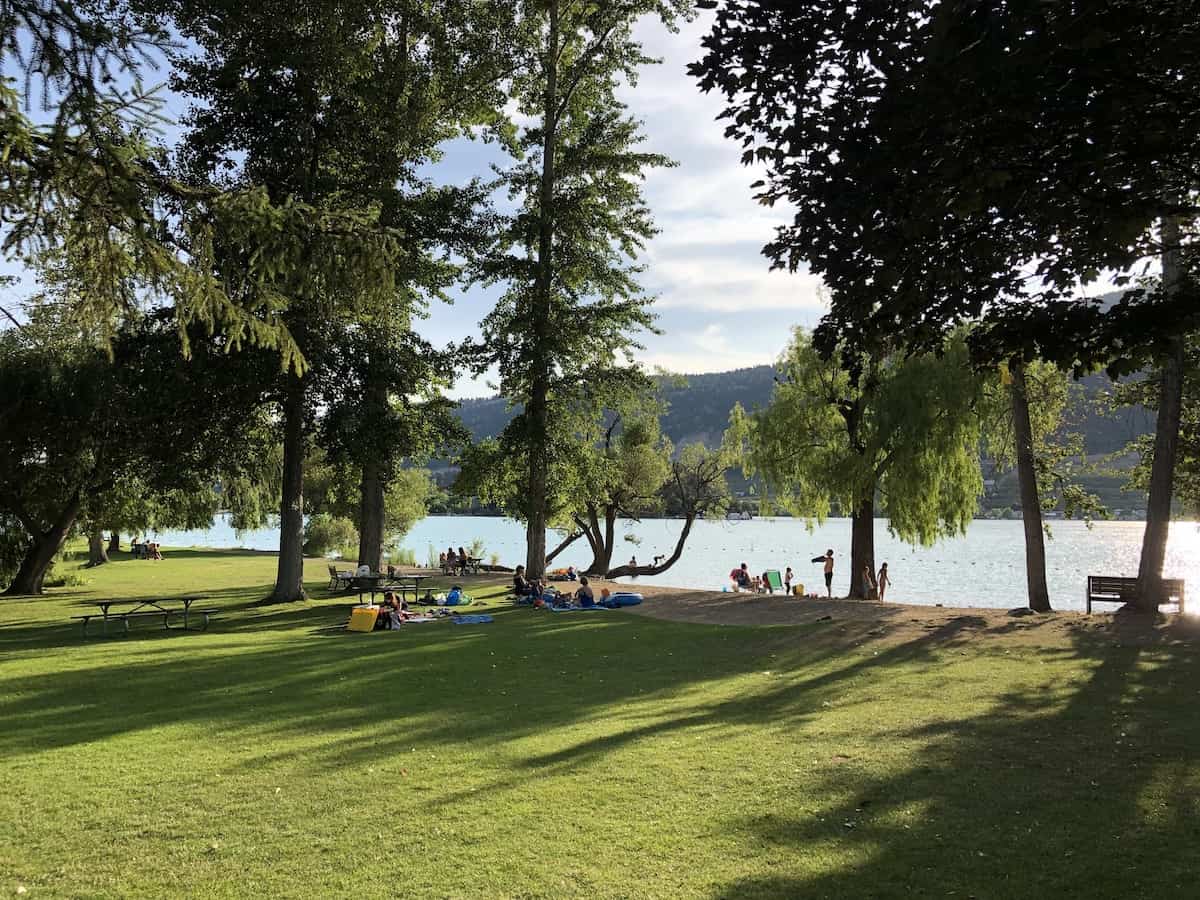
If you can’t keep your dog off your lawn for weeks at a time, consider planting the new lawn in sections. Let your dog play in an existing area while you work on getting a separate area established completely. Then go back and work on the first area once your canine is happily ensconced in the newly-renovated portion of the lawn. Alternatively, consider installing sod for an almost-instant lawn. In southern areas, lawns can also be established from grass plugs.
Grass seed varieties for dog-hardy lawns
The quality of grass seed for sale varies widely. If you care about your lawn enough to research it, it’s worth investing in high-quality, tough, long-lasting grass seed. Don’t put in a whole season’s worth of work just to realize that half of the grass seed you planted turned out to be filler annual varieties (that only last one year). There are now even dog-resistant grass seed blends to choose from.
“Are you going to have a showcase lawn? A kid-friendly lawn with a swing set or a pinchbeck? Volleyball games every other weekend? Choosing the right grass is all about determining its suitability not only for your climate, but also for your lifestyle.”
The Lawn Bible: How to Keep It Green, Groomed, and Growing Every Season of the Year, by David R. Mellor, Fenway Park’s Master Groundskeeper
Always look for a well-labeled product from a reputable brand that lists the varieties of grass inside the package. Here are some of the best types of grass seed to buy while planting a dog-hardy lawn:
Northern Varieties:
- Tall fescue
- Kentucky bluegrass
- Perennial ryegrass
Southern Varieties:
- Zoysia Grass (seeds or plugs)
- Bermuda grass
- Bahia grass
Northern varieties of grass are generally grown in a blend of different types, while southern warm-season grasses are generally grown with a single species.
“Turf grasses vary widely in their ability to withstand wear and tear. If you need a grass that can stand up to heavy use, consider cool-season perennial ryegrass or tall fescue or warm-season bahia grass, bermuda grass, or zoysia grass.”
Rodale’s Successful Organic Gardening: Lawns, Grasses and Groundcovers, by Lewis Hill & Nancy Hill
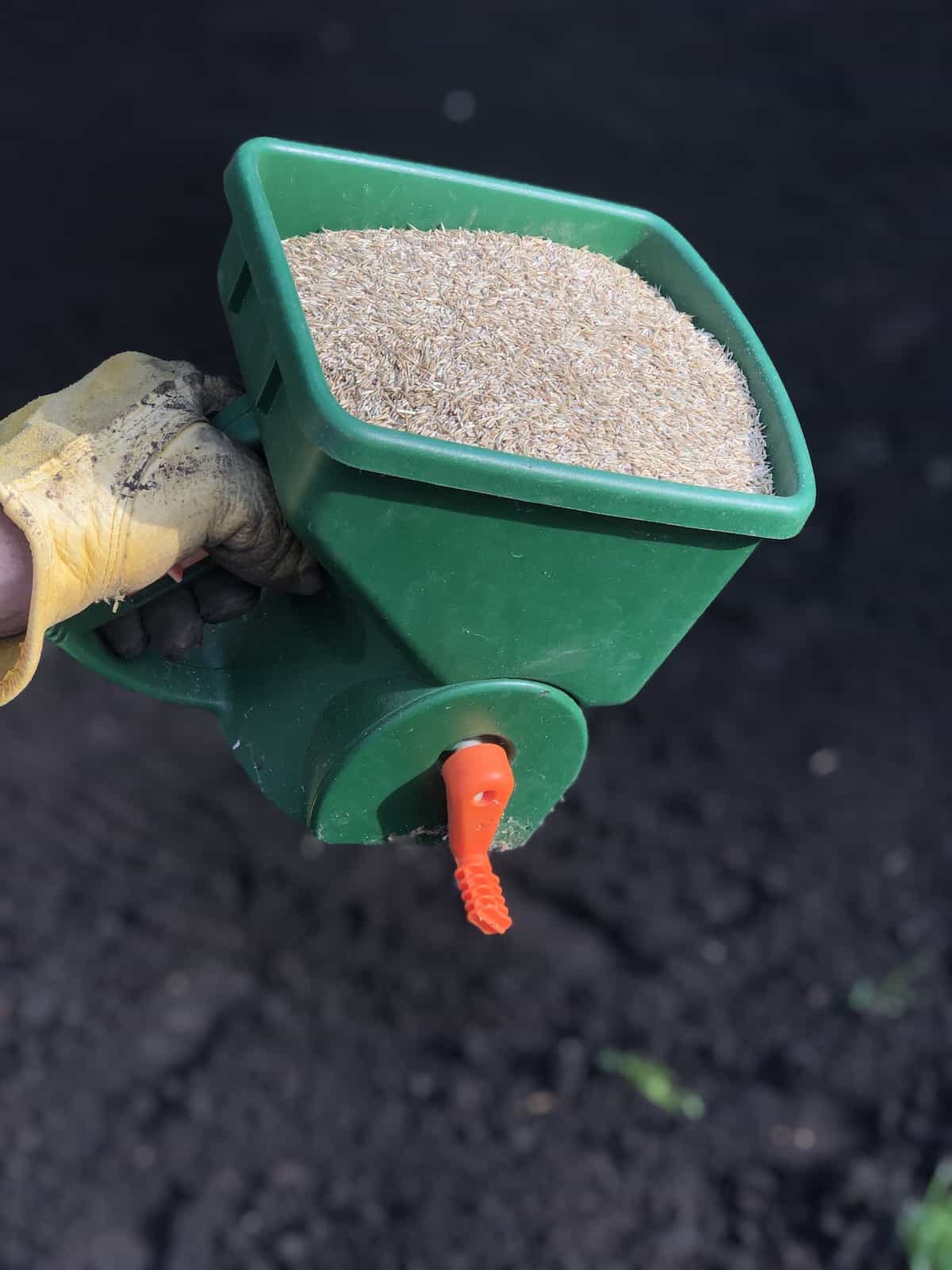
Clover is generally becoming much more acceptable in lawns. Some dog-lovers even intentionally plant clover seed in their lawn. The clover helps the lawn get adequate nitrogen and provides another layer of physical protection from regular wear and tear. A bit of clover in with the grass is generally not of concern.
“The best first step in natural weed control is to take a deep breath and make an honest evaluation of your weed population. A rule of thumb is that if you have anything less than 10 percent weeds in your grass, you don’t have a weed problem worth treating. Anything more than 90% perfection isn’t even reasonable to expect in a backyard setting.”
The Organic Lawn Care Manual: A Natural, Low-Maintenance System for a Beautiful, Safe Lawn, by Paul Tukey
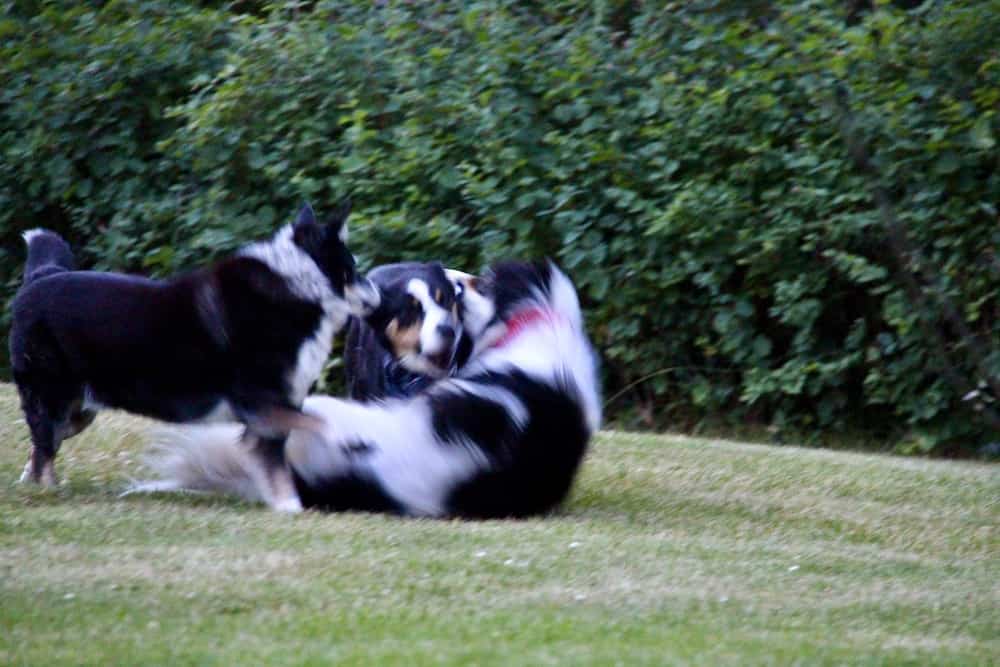
Reducing canine wear and tear on the lawn
Hardscaped paths will help to reduce wear and tear in the most well-traveled areas of your lawn. This is especially important in rainy climates, as dogs can do damage to wet lawns much more quickly than dry lawns. Also, consider installing sheet moss in any shady corners or other ground covers in areas where growing grass will require excessive attention.
If your dog likes digging, consider delegating a certain area for that purpose. Many backyards have kid’s playgrounds – why not have a doggy playground? Plan it out and make it intentional. A designated play area can look much more put-together than a lawn full of random holes.
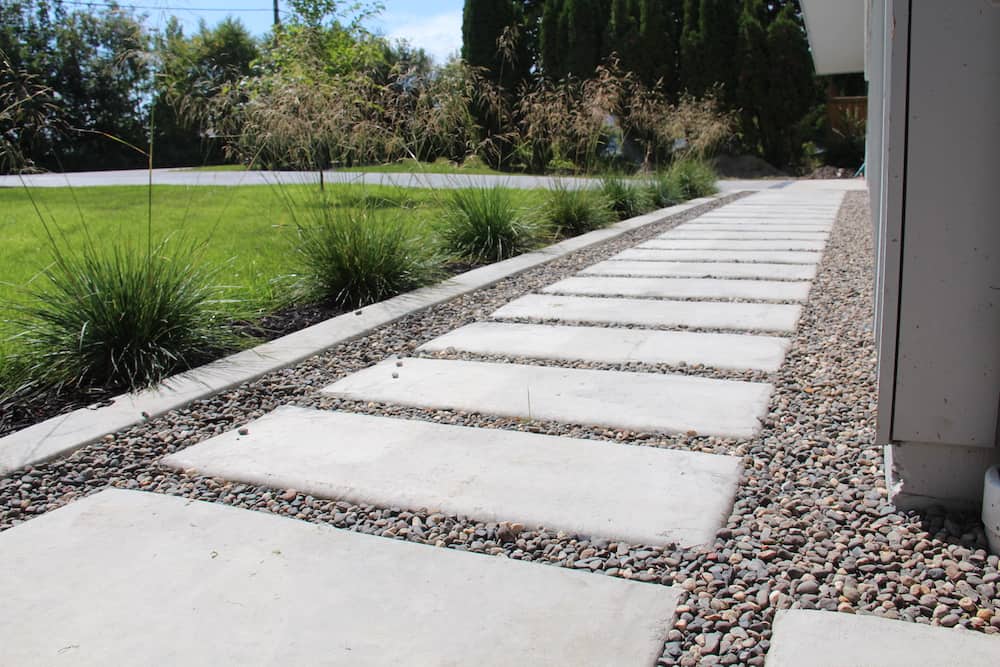
If you are dealing with brown spots because of urine, consider training your pets to go to the bathroom in a certain designated area. Doggy potty training is no walk in the park, but you’ll be eager to show off your pup’s new potty skills once they’ve learned to put their pee in a certain spot! Plus, your pooch will be so happy they’re making you proud with their pee placement skills. And in the meantime, there are always pet patch treatments.
And for doggy poops – always remove them from the lawn promptly and dispose of them safely. Removing dog poop is SUCH an important step to growing grass with dogs in the household. Dilution of the area with water after removal can also help to minimize disruption to the soil life in the area.
Repairing an existing lawn for dog habitat
Existing lawns can generally be improved from their current state with some diligent renovation work. Steps such as de-thatching, core aeration, top dressing with compost, and over-seeding with hardy high-quality seed will all improve the health of your lawn.
If you are dealing with brown spots of dead grass, don’t panic – it’s a natural part of growing grass with dogs. It’s easy to fix, and more often than not, it’ll take care of itself in time. These spots of dead grass can be caused by the high nitrogen concentration in canine urine (NOT pH). You can observe the same phenomenon in lawns that have been subjected to over-fertilization with nitrogen lawn fertilizers.
Watering the area immediately afterward will often greatly decrease the amount of damage. Diluting the soil with water not only minimizes dead spots but also helps to blend in the brighter green spots that can also appear where a dog has peed. Nitrogen is, after all, the key ingredient in lawn fertilizer. Spread it out with some water for the most even look to the lawn.
And please DO NOT feed your dog weird foods to “prevent” these brown urine spots from happening. It doesn’t work that way. Check out this helpful article from the University of Wisconsin.
Small spots will often recover with deep watering. Larger dead spots can be revived with consistent success and attention to detail. Start by raking out any dead plant matter so that the bare soil is exposed. Place an inch of homemade compost onto the patch of bare soil. Rake it in gently to the surrounding soil. Seed the patch with high-quality grass seed and keep the seed moist until the grass becomes established.
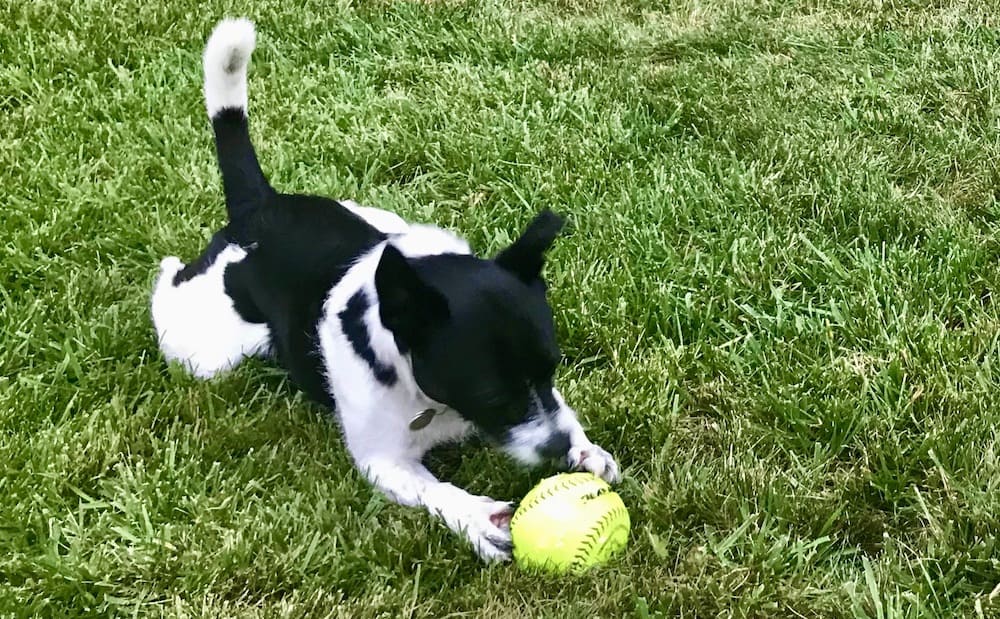
Pet-safe fertilizer for turf grass lawns
Many lawn fertilizer products are clearly marked as pet-safe, but others can be quite harmful to dogs. Choose your fertilizer wisely! Use a pet-safe lawn fertilizer on your turf grass.
Only fertilize your lawn if it truly needs it, and minimize the number of feedings throughout the year. When you do fertilize, use a product that is clearly marked as safe for lawns that kids and pets play on.
In the absence of a soil test, consider applying a high-quality nitrogen-rich lawn fertilizer in the spring and following up with a light top-dressing of homemade compost in the early fall.
Growing grass with dogs is worth investing in safe and effective products. No “easy quick-fix” for your lawn is worth endangering our four-legged friends! Stick to pet-safe organic lawn fertilizers (and skip the synthetic lawn chemicals!).
“Best of all, children and pets can play on your environmentally friendly lawn without danger of exposure to toxic insecticides and herbicides.”
Rodale’s Successful Organic Gardening: Lawns, Grasses and Groundcovers, by Lewis Hill & Nancy Hill


